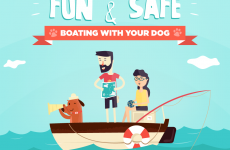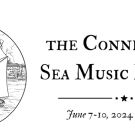
Aboard Mighty Sparrow, his Westsail 32, Rand would routinely see between 50 and 55 knots of breeze in the Southern Ocean, at which times he’d “help” the wind vane steer.
By Bob Muggleston
For Points East
On June 30, aboard his Westsail 32 Mighty Sparrow, Jerome Rand closed the loop he’d begun nearly nine months earlier by sailing into his homeport of Gloucester, Mass. For Rand it was the first time he’d been on land since leaving in the fall of 2017. When I spoke to him nearly two weeks later he said he was still trying to get used to life on land – the ground had finally stopped swaying – but that he was happy to be back in one piece.
Rand’s journey was a grab bag of everything you’d expect on a voyage that included all three capes and a long stint in the Southern Ocean, and for good measure he endured water and food scares. Crossing the Indian Ocean his water supply got as low as two gallons – he became severely dehydrated trying to conserve water while fixing his equipment – and off the coast of New Zealand he saw a picture of himself and realized he’d lost nearly 40 pounds. “Those days were pretty spooky,” Jerome said. “I was cold, skinny as a rail, and the Southern Ocean had been terrifying. Next time I’ll consult someone before provisioning! I’d brought along a lot of snacks but was way short on staples.” Rand eventually had to have a supply drop made off the Falkland Islands in order to continue the trip. Asked what food items he dreamed about most on the trip he laughed. “Probably ham and cheese sandwiches on really fresh bread,” he said. “That, and slices of pizza.”
Prior to reaching the Indian Ocean Rand had one of his single scariest moments while rounding the Cape of Good Hope in a storm, the horrible conditions there he attributed to the awful currents that converge. Curiously enough, the Volvo Ocean Race boats had rounded just in front of him, and he said they got beat up pretty badly, too. Rand said he remembers thinking at the time, “I’m going to be down here for how many months!?”
Rand considers himself lucky to have survived the Southern Ocean leg, and said he’d routinely see squalls between 50 and 55 knots, at which time he’d have to “help” his wind vane steer the boat. Short of those wind speeds, he reports, the wind vane handled the boat all the way around. In extreme conditions Rand would run before the wind “like Moitessier,” with either a scrap of jib out or a triple-reefed main. He tried to maintain at least five knots of boat speed at all times in storms for adequate steerage.
Worse than the squalls were the lulls afterwards, in which the wind would shut off – but not the sea state. “The hardest thing was being becalmed,” Rand said. “There’d be these 20-foot swells with no wind, and I couldn’t even leave the mainsail up because it would slat so hard that stuff would break. Sometimes it would last an entire day. It was pure misery.”
When I pointed out that Joshua Slocum (one of Rand’s heroes, along with Moistessier and especially Robin Knox-Johnston, for his ability to push through adversity) didn’t talk much about those days, Rand laughed. “No, he didn’t! He might have once near the end of ‘Sailing Alone,’ but Moitessier would a little bit.” Rand appreciated the “dreamer’s mindset” of Moitessier, and said even as a kid he was enamored by the idea of getting away from civilization.
The trip itself was nearly sidetracked after Hurricane Irma wiped out the Bitter End Yacht Club in Virgin Gorda, where Rand was the water sports director, one month before his scheduled October 2017 departure. “There I was in Maine just sitting with a boat loaded with food and fuel, and I thought, ‘I should just go down there and help.’ I have so many friends down there, so it was tough not to be able to do anything.”
Rand said he chose the Westsail 32 as his vessel after extensive research, and reading how safe the boats were. “I wasn’t trying to break any speed records,” he said. “I just wanted to get around safely.” He chose the name Mighty Sparrow because of his good friendship with the calypso star of the same name in the Caribbean, and because he loved the symbolism, “sparrows being such tiny birds with a huge migratory pattern.”









